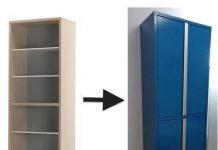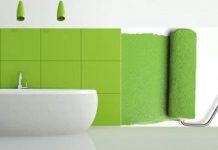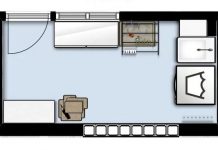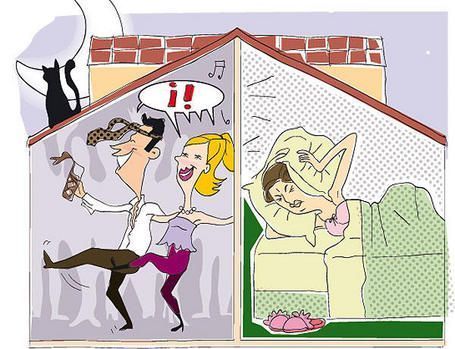
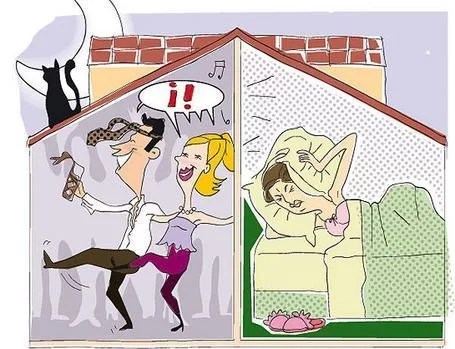
You get home after being out all day, you lie down on the sofa wanting to relax and disconnect and then you listen to it… it’s the neighbor next door and you’re listening to him as if you had him there in the living room, sitting next to you. It is a disease of many, the syndrome of the «paper walls«, dwellings with a poor sound insulation. Keep reading if you want to know what solutions there are for acoustically isolate a dividing wall and get rid of the annoying noises of the neighbors.
The noises can be of many types: airborne noise, vibration noise, structural noise, impact noise… each one has a solution, although in this article I am going to focus on the air noises which are those that are transmitted through the air, that is, the voices of the neighbors, their television, their music, etc.
at the time of acoustically isolate a wall you have to distinguish between insulating materials and absorbent materials. The Insulating materials they are rigid, compact, dense and non-porous. They do not let sound through or absorb it, but rather bounce it back. That is, they act as a “mirror” against noise.
Between the Insulating materials, the best known is lead. due to its high density. There are acoustic panels on the market that incorporate thin sheets of lead, although they have the drawback that they are expensive.
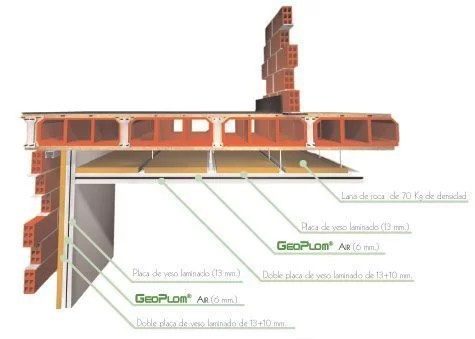
On the other hand, the glass wool, rock wool or acoustic foams are absorbent materials. What does this mean? Well, due to their porosity and low density, they are capable of absorbing sound and transforming it into heat (which is why they are also used as thermal insulation). This prevents the sound from bouncing back, even though some of it passes through.
To help you understand it better, imagine a sponge, when it gets wet it soaks up water (it absorbs it), but it also drips water (it lets part of the water pass through).
Thus, acoustically isolate a wall with only absorbent materials can alleviate the problem a little but not solve it since part of the noise will continue to pass through. Traditionally, what is usually done is to place an absorbent material (rock wool, glass wool, etc.) on the wall to be insulated by means of an adhesive and, subsequently, complement it with a denser material such as laminated plaster (popularly known as «drywall»). This system has the drawback that it subtracts several centimeters of space from the room (approximately 7 cm).
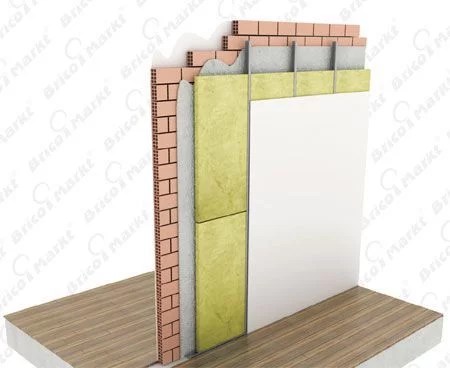
Some alternatives to laminated plaster and that can be very decorative, are the wood panels.
Once we have chosen the type of material that we are going to place, we must make sure everything is well sealed. For example, a conflictive point is usually the light boxes, if we do not reposition them correctly they can act as noise leak pointsfiltering it despite the fact that the rest of the wall is perfectly insulated.
Finally, there are specialized companies that are dedicated to carrying out this type of insulation work. As always it is important to strike a balance between professionalism and price, although if we have a bit of skill we can resort to buying the material and installing it ourselves, in this case it will always be cheaper.
Have you ever had noise problems? have you considered acoustically isolate any wall or room in your home? If so, I hope this article has been as useful to you as it was to me when searching solutions to acoustically isolate the dividing wall with our neighbors.

